Search results for "2011/04/2010/05/song-without-words"
Vilja-Tuulia Huotarinen: Valoa valoa valoa [Light light light]
13 January 2012 | Mini reviews, Reviews
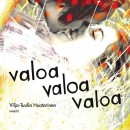 Valoa valoa valoa
Valoa valoa valoa
[Light light light]
Hämeenlinna: Karisto, 2011. 125 p.
ISBN 978-951-23-5433-7
€ 19.95, paperback
Vilja-Tuulia Huotarinen’s novel for young adults demonstrates the author’s familiarity with classic books for girls, her skill in plotting, and, above all, her respect for youth on its own, unique terms. The novel is set in the summer and autumn of 1986. A nuclear explosion occurs at Chernobyl, Ukraine, in spring, and the fall-out worries 14-year old Mariia, who lives on the outskirts of Turku. She befriends Mimi, who has a dark secret in the attic. The friendship between the two girls soon deepens into love, and is described by Huotarinen (born 1977) beautifully and openly. Huotarinen’s language is colloquial, but nevertheless highly lyrical. Valoa valoa valoa promises a revival in the Finnish novel for young adults; it does not wallow in youthful angst or ‘issues’, although the story touches on these things, too. Self-conscious narration, metafiction, adds another intriguing twist to the story.
Translated by Fleur Jeremiah and Emily Jeremiah
Consume culture, live longer!
16 May 2013 | This 'n' that
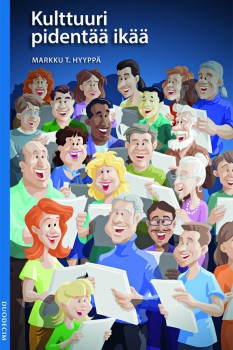 A culture freak (and you don’t have to be a vulture) will live longer than a couch potato.
A culture freak (and you don’t have to be a vulture) will live longer than a couch potato.
This sounds pretty obvious, doesn’t it? Watching TV is a passive pursuit, attending choir rehearsals or line dancing class isn’t – and human beings are designed to be active.
But it is also a scientific fact. Neurologist and writer MD Markku T. Hyyppä has been researching the effects of cultural pursuits on health for decades. In his new book Kulttuuri pidentää ikää (‘Culture prolongs your life’) he sets out to prove the power of culture using scientific evidence from many countries.
Cultural capital is a concept that defines the ‘usefulness of culture’. Hyyppä disagrees with the famous sociologist Pierre Bourdieu who defines cultural capital as a means for the upper classes to increase their personal status and power. According to Hyyppä, cultural capital is immaterial, originates from cultural pursuits and the consumption of culture, and brings benefits to all who take part.
Learning the basics of culture in one’s education is vital: Finland has done well in the international PISA exams, but it’s not just because the children are bright. Learning how to educate is important: unlike in many other countries, the arts play a significant role in teacher training in Finland. And arts subjects are important in education: art has a positive effect on emotions and cognition, on emotional life as well as reason. Study arts subjects, and it will be easier to learn maths!
It’s a fact is that those who are socially active in clubs, associations and cultural pursuits in general, live longer than those who are not. Economic status is not a decisive factor here. The efficacy of cultural pursuits and cultural capital on prolonging an individual’s life appears to be based on networking. i.e. social capital. Social capital increases the chances of staying alive – almost as much as non-smoking and much more than the estimated extra time of exercise or losing weight. An individual’s cultural pursuits allow him at least a couple of years more in old age.
Hyyppä also examines and comments on the cultural policies of Finnish political parties. After the Perussuomalaiset – True Finns – party presented its manifesto in 2011, stating that contemporary art should not receive any public funding, as only art that ‘strengthens the national identity’ should be funded, other political parties began hastily to revise and update their dusty arts programmes. As it has been proved in international and Finnish medical research that culture definitely has a positive impact on developing society as a whole, political parties cannot afford to ignore dealing with the subject.
In conclusion, Hyyppä states that Finland would certainly benefit from the cultural added value that manifests itself in well-being, health and a longer life spans. When people live longer healthy, the national economy gains massively.
It’s not just opera, ballet and favouring the paintings of the Düsseldorf school that bring you cultural capital and prolong your existence; rock concerts or pottery classes are fine, too. But, notes Hyyppä, being active in politics in your free time, going to church and participating in spectator sports don’t seem to have a similar positive effect, so might it be better not to concentrate on those alone?
Markku T. Hyyppä
Kulttuuri pidentää ikää
(‘Culture prolongs your life’)
Helsinki: Duodecim, 2013. 132 p.
ISBN 978-951-656-479-4
Remains healthy
13 April 2011 | Non-fiction
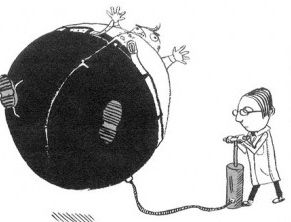
Case note: patient has coronary artery disease for which he was given a balloon. Illustration: Elina Warsta
In these samples from a collection of patient reports, Molemmista päistä tähystetty: päättömiä potilaskertomuksia (‘Examined at both ends: brainless patient reports’, Otava, 2011), human disorders appear bizarre, puzzling or just plain funny in case notes as dictation or transcription occasionally proves erratic
The patient was given instructions for his bowels.
Recommend milder aerobics, ie swimming on an exercise bicycle.
Patient is a healthy 70-year-old girl.
And a mental health evaluation is recommended for the designer of this form. More…
Päivi Jantunen: Kaj & Franck. Esineitä ja lähikuvia / Designs & Impressions
6 July 2011 | Mini reviews, Reviews
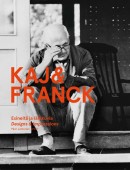 Kaj & Franck. Esineitä ja lähikuvia. / Designs & Impressions
Kaj & Franck. Esineitä ja lähikuvia. / Designs & Impressions
English translations: Peter Herring and Esa Lehtinen
Helsinki: WSOY, 2011. 166 p., ill.
ISBN 978-951-0-36898-5
€ 42, hardback
This dual-language book showcases the work of one of Finland’s most widely known glass and ceramic designers in his centenary year. The unaffected designs and clean geometric shapes of the tableware designed by Kaj Franck (1911–1989) are well suited to a wide range of cultures. Franck’s guiding principle was to create anonymous, self-evident objects for everyday use. In the 1940s and 1950s, Franck updated tableware to match post-war changes in society; he wanted to get away from the sets of crockery that filled up smaller kitchen cupboards. His designs that emphasised environmental principles and equality were ahead of their time with their ideology of sustainable development. This book portrays Franck’s life and career, which centred on the oldest glassworks in Finland in the community of Nuutajärvi, where he worked from the early 1950s until his death. Interviews with local residents and Franck’s colleagues create a portrait of him as a colourful personality. Ample illustrations provide a cross-section of Franck’s design output. In addition to his mass-produced items, there are photos of Franck’s one-off artistic creations.
Translated by Ruth Urbom
Tero Tähtinen: Katmandun unet. Kirjoituksia idästä ja lännestä [Kathmandu dreams. Writings about East and West]
26 January 2012 | Mini reviews, Reviews
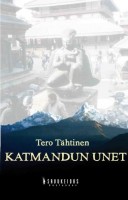 Katmandun unet. Kirjoituksia idästä ja lännestä
Katmandun unet. Kirjoituksia idästä ja lännestä
[Kathmandu dreams. Writings about East and West]
Turku: Savukeidas, 2011. 332 p.
ISBN 978-952-268-005-1
€ 19.90, paperback
Tero Tähtinen’s second collection of essays is focused physically in the wilds of a Finnish national park and Nepal – where the author (born 1978), a literary scholar and critic, has frequently travelled – and mentally in the divergences of Western and Eastern thought, which Tähtinen, who is familiar with Zen and Buddhist philosophy, studies, occasionally by means of literary examples. The ‘Socratic ego’ of the Western egocentric, individual ‘I’, which strives in vain to understand the whole of reality by rationalising it, is his favourite bête noire. Tähtinen quickens the pace of his verbal virtuosity as he discusses both dogmatic, materialistic faith in science – as well as some of its representatives – and Christian faith: he considers that both, in their pursuit of an absolute and total explanation, end up in a metaphysical vacuum. Unlike them, Eastern philosophy, in which the individual ‘I’ is not the centre and measure of all things, does not give rise to the anxiety of compulsive cognition. The virtual narcissism of Facebook, a platform tailor-made for the Socratic ego, receives Tähtinen’s outright condemnation: ‘Facebook trivialises humanity,’ he declares. At the end of these passionate essays on the author praises silence.
Translated by David McDuff
Winner of the Nordic Council Literature Prize
6 November 2014 | In the news
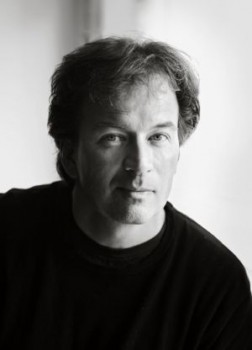
Kjell Westö. Photo: Kata Portin
The Nordic Council Literature Prize 2014 went to Kjell Westö and his novel Hägring 38 (‘Mirage 38’, 2013; in Finnish, Kangastus 38). The prize, awarded since 1962 and worth €47,000, was given on 29 October at a ceremony in Stockholm.
Among the 13 nominees was another Finn, the poet Henriikka Tavi with her collection Toivo (‘Hope’, 2011).
The jury said: ‘The Nordic Council Literature Prize goes to the Finnish writer Kjell Westö for the novel Mirage 38, the evocative prose of which breathes life into a critical moment in Finland’s history [the time before the Winter War, 1939–1940] – one that has links to the present day.’ Here, more on Westö and his winning novel.
Katja Hagelstam & Piëtke Visser: 20+12 design stories from Helsinki
4 April 2012 | Mini reviews, Reviews
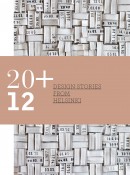 20+12 design stories from Helsinki
20+12 design stories from Helsinki
Helsinki: WSOY, 2011. 191 p., ill.
ISBN 978-951-0-38120-5
€35, hardback
In Finnish:
20+12 muotoilutarinaa Helsingistä
ISBN 978-951-0-38136-6
In celebration of Helsinki’s status as World Design Capital 2012 comes this volume of vignettes of the city’s designers. Twenty Helsinki designers and artists – from textile designers and animators to illustrators and industrial designers – are interviewed by Eva Lamppu about their work and the inspiration they find in their city. The result, handsomely illustrated with atmospheric photographs by Katja Hagelstam, is a fascinating composite portrait, a colourful patchwork of creative lives lived out against the compact and interconnected fabric of this small northerly capital, which – not unexpectedly – is revealed as both sympathetic and conducive to good design. The book is rounded off by suggestions from 12 people active in creative fields on the city’s future. A fascinating and heartwarming study.
Markku Kuisma: Saha. Tarina Suomen modernisaatiosta ja ihmisistä jotka sen tekivät [The sawmill. A story about Finnish modernisation and the people who realised it]
29 May 2012 | Mini reviews, Reviews
 Saha. Tarina Suomen modernisaatiosta ja ihmisistä jotka sen tekivät
Saha. Tarina Suomen modernisaatiosta ja ihmisistä jotka sen tekivät
[The sawmill. A story about Finnish modernisation and the people who realised it]
Helsinki: Siltala, 2011. 235 p.
ISBN 978-952-234-069-6
€ 34.90, hardback
In his new book Professor Markku Kuisma, a specialist in economic history, approaches the modernisation of Finland in the 19th century from the perspective of the sawmill industry. In the mid 19th century, Finland’s forest reserves were, in relation to its population, among the greatest in Europe. The rise of the sawmill industry was made possible by Britain’s removal of taxation on industrial imports, the development of Finland’s railways and other means of transport, the removal of Finnish restrictions on the timber industry, the spread of steam saws and changes in society. The foundations of the breakthrough of the sawmill industry were laid in the 1860s, but it began to flourish gradually. Between the two world wars Finland became Europe’s biggest exporter of timber, and for a long time the country derived most of its export income from timber products. Kuisma also draws interesting portraits of the men who made the change possible both in government administration and economic life and laid the basis for industrial dynasties. Saha is a concise but illuminating and engrossing introduction to an important phase in the development of Finnish economic life.
Translated by Hildi Hawkins
Dear Reader!
13 January 2011 | This 'n' that
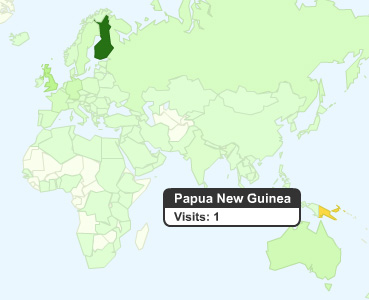
Reading Books from Finland here, there and... Photo: Google Analytics
2011 is well underway, and it’s back to business – reporting on good books from Finland, that is!
The new year also marks the beginning of our third year online: we are very pleased to note that last year visits to this site increased by 187 per cent compared to 2009!
Our foreign readers hail from a total of 149 countries, although the majority are in the United States and the United Kingdom – with a surprisingly large number of neighbourly visits from readers in Finland.
There are some countries where only one reader has taken a look at Books from Finland last year; greetings to our own readers in Honduras and Papua New Guinea…. But, on the other hand, readership in Belarus has grown by 2.400 per cent, from just one in 2009 to a grand total of 25!
We’ve been very glad to have your online feedback, which prompted us to think that since we haven’t done a reader survey for a longish time, we might take the opportunity to run another one now – so we’ll be quizzing you about your views of the contents of the journal on this page soon.
We hope to offer you more that is diverting, entertaining and thought-provoking this year than ever before. Remember, you can also keep abreast of what’s going on on the Books from Finland website by subscribing to our RSS and e-mail delivery services (and we’re on Facebook, too).
Happy new year, and good reading!
The editors
Soila Lehtonen (Helsinki)
Hildi Hawkins (London)
A fleeting scent
24 October 2013 | Fiction, poetry
Poems from Öar i ett hav som strömmar (‘Islands in a flowing sea’, Schildts and Söderströms, 2013). Introduction by Michel Ekman
A fig wasp’s life
She squeezes in. The opening closes and the world overflows. She swims in the sweet flowing moisture. In the sycamore fig tree, a myriad of delicate white blossoms have burst out. For her eyes alone, a damp garden, alabaster-clear. The home she’s been longing for. There she lays her eggs, empties her pouches. Tiny little pollen grains for the tiny little blossoms. Membranes form round the eggs, they live off the sweetness, it rocks them gently. Fine, frail swaying thicket of embryos More…
Maria Vuorio: Kuningattaren viitta ja muita kiperiä kysymyksiä [The Queen’s cloak and other knotty issues]
19 January 2012 | Mini reviews, Reviews
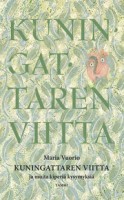 Kuningattaren viitta ja muita kiperiä kysymyksiä
Kuningattaren viitta ja muita kiperiä kysymyksiä
[The Queen’s cloak and other knotty issues]
Kuvitus [Ill. by]: Virpi Talvitie
Helsinki: Tammi, 2011. 71 p.
ISBN 978-951-31-6252-8
€ 20.60, hardback
The style of Maria Vuorio’s books demands quiet concentration – but you could get quite hooked on their slow, thoughtful, gentle story-telling. Vuorio carries on the tradition of classic animal fables, following in the footsteps of Hans Christian Andersen, but with a personal twist. She is masterful in describing different emotional states – whether evoking the inner lives of humans or of anthropomorphised animals. Her stories and fairy tales hand the reader a magnifying glass that brings into view even the smallest, most insignificant creature or thing. The entire universe is present in the stories, for example when an earthworm ponders the meaning of life, a bear breaks into the National Museum, or a noxious insect imperils cultural exchange between Finland and Denmark. Talvitie has drawn an allegorical picture for each tale.
Translated by Fleur Jeremiah and Emily Jeremiah
New library for Helsinki
20 June 2013 | In the news

The new Helsinki library: Käännös by ALA Architects Ltd
The city of Helsinki will have a new Central Library in the near future: an architectural competition for a new building was completed in June. The winner, chosen out of 554 entries, foreign and Finnish, is entitled Käännös (‘Turn’ – or ‘Translation’), entered by the Finnish ALA Architects Ltd (architects Juho Grönholm, Antti Nousjoki, Janne Teräsvirta, Samuli Woolston). The entry was also one of the favourites with the public in an earlier stage of the competition.
The jury’s decision was unanimous: in their opinion, Käännös is ‘impressive’ and ‘casually generous’; it fits into the urban structure as an feasible, usable and ecological construction. The site could not be more central: close to the citys’ railway station, it faces the House of Parliament, next to the Museum of Contemporary Art Kiasma and the new Music Centre (opened 2011): literary art and literature will join the other art forms.
Tchotchkes for the tsar
11 August 2011 | Reviews
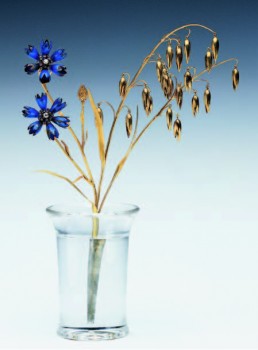
Cornflower and ear of oats: one of the several Fabergé gemstone ornaments now owned by Queen Elizabeth of England (gold, rock crystal, diamonds, enamel, ca 18 cm)
Ulla Tillander-Godenhielm
Fabergén suomalaiset mestarit
[Fabergé’s Finnish masters]
Design: Jukka Aalto/Armadillo Graphics
Helsinki: Tammi, 2011. 271 p., ill.
ISBN 978-951-31-5878-1
€57, hardback
In its online shop, the Hermitage Museum in St Petersburg sells a copy of a most delicate, enchanting little nephrite-and-opal lily of the valley that perfectly imitates nature, sitting in a vase made of rock crystal that looks like a glass of water.
These small flowers made of gold and gemstones were manufactured by the jeweller Fabergé a hundred years ago. The lily of the valley was the most frequently used floral motif in the Fabergé workshops – it was the favourite flower of Empress Alexandra (1872–1918), and the imperial family was the the foremost client of the world’s foremost jeweller.
The replica (13.5 centimetres high) is available at the Hermitage as a ‘luxury gift’ for the price of mere $3,300. (N.B. Since we published this review, the ‘luxury gift’ items seem to have disappeared from the Hermitage online shop selection, so we have removed the link. Several Fabergé egg replicas are available though, ranging in price from $200 upwards – link below.)
For those who feel the price is excessive, there is also a rather modestly-priced little bay tree (original: gold, Siberian nephrite, diamonds, amethysts, pearls, citrines, agates and rubies as well as natural feathers, about 30 centimetres tall, featuring a little bird that emerges flapping its wings and singing when a small key is turned) at just $ 219,95. Despite its form, it is classified as one of the famous imperial Easter eggs. (However, as I write, this item is unfortunately sold out…) More…
Peter von Bagh: Junassa [On the train]
26 August 2011 | Mini reviews, Reviews
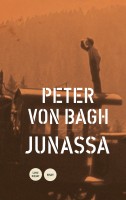 Peter von Bagh
Peter von Bagh
Junassa
[On the train]
Helsinki: Love Kirjat / WSOY, 2011. 255 p., ill.
ISBN 978-951-0-37921-9
€18, hardback
Professor Peter von Bagh, a film director and academic, is the author of a wide range of books on the history of film and culture. In this small-scale volume of essays, he investigates the significant role played by trains and railways in cinematic plot structures since the days of silent film. The text chugs along in a series of snippets, reminiscent of a rail passenger’s experience of scenery zipping past. This book looks at classics of the film noir, Western and romance genres, along with films that have used trains as a deeper metaphor for life. von Bagh also considers the critically derided but widely loved Finnish popular culture from the 1940s and ’50s, as well as fiction. For example, author Juhani Aho’s first novel, Rautatie (‘The railway’, 1884), depicted an individual’s first experience of a train journey with a degree of authenticity that it can be compared to the uproar the Lumière brothers’ early films generated among the audiences. Unfortunately Junassa lacks an index of the works and people mentioned in the text.
Translated by Ruth Urbom
Reflections on light
24 September 2014 | Extracts, Non-fiction
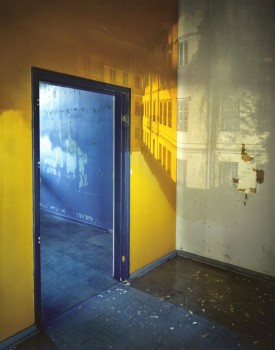
Speaking House #12, 2006. Photo: Marja PIrilä
A camera obscura (‘darkened room’) is the optical device that made photography possible; it is a box – or a room – with a hole in one side. Photographer Marja Pirilä has been using this method as a tool for almost 20 years. The book Carried by Light spans more than 30 years of her photography.
In the book artist and researcher Jyrki Siukonen notes in his essay ‘Eyes and Cameras’ that ‘in photographing spaces Pirilä also depicts people. The dreams continue on the walls of the empty building, as if after the people the house had become like them and were dreaming the dreams itself.’
Photographs and text extracts from Carried by Light by Marja Pirilä (Musta Taide, 2014)
